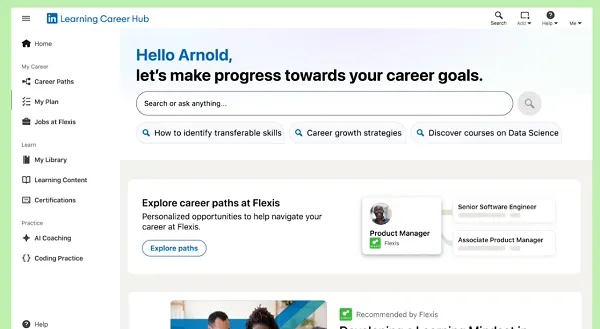Opinions expressed by Entrepreneur contributors are their own.
A Business Continuity Plan (BCP) is often something that many professionals do not pay close attention to. History has shown us that even industry giants can be humbled and collapse or lose significant income when they overlook critical vulnerabilities in their preparation for crises.
This can range from overconfidence in their abilities and technologies used to geopolitical unawareness. If the blind spots are not managed carefully, severe crises can be escalated, which can even threaten the future of the business.
This article will look at three catastrophic BCP failures that brought down industry titans. Every organization or company can learn lessons from these in order to ensure that they do not make the same mistakes.
Related: The Cost of Unpreparedness: Why Many Businesses Lack a Continuity Strategy
Overconfidence in technology — How Facebook lost brand value
Many leading social networks were a few years ago always confident that their AI and automation would help them to solve crises without the need for human intervention. The overreliance can pose severe problems when complex problems arise.
In 2018, Facebook was dealt severe embarrassment for its overreliance on its automation after an automated network configuration tool misapplied changes, which caused the disruption of its services to millions. The incident exposed a critical flaw in that no manual override was in place to be able to correct the error quickly.
Facebook not only suffered reputational damage as users and advertisers lost trust in its reliability, but it also exposed its slow response as engineers struggled to diagnose the issue due to opaque system dependencies. There was also a lack of redundancy as no backup systems were activated in order to bypass the faulty automation.
The big lesson to be learned from Facebook’s error is that automation is still just a tool and not yet a replacement for human judgment. BCPs must always include fail-safes — i.e., manual overrides for critical systems, scenario testing, which means regular drills for technology failures, and transparency in order to ensure clear communication protocols during outages.
Related: Do You Have a ‘Business Continuity Plan’?
A failure to recognize geopolitical certainty led to Adobe usurping Kodak
It is important for major companies to always pay attention to geopolitical shifts and understand that a company has to regularly adapt depending on what happens in the world. Kodak was guilty of treating geopolitical shifts as distant risks, and this shortsightedness led to its downfall.
It was actually Kodak that invented the digital camera, but rather than further developing it, they opted to bury the technology in order to protect their film business. Upon noticing that humans were migrating to digital systems, Adobe migrated earlier than Kodak, embracing cloud-based tools and recurring revenue models. Kodak paid the price for reacting too late and had to file for bankruptcy in 2012.
Kodak paid the price as their leadership clung to legacy revenue streams, they didn’t have a BCP for disruptive tech adaptation and as they had ignored hard trends such as digital migration, which was inevitable.
Learning from the example of Kodak, it is always important for companies to monitor trends and especially identify hard trends such as demographics and technology evolution in order to predict disruptions. Flexible frameworks should be developed in order to allow rapid pivots, and there should be shareholder alignment to ensure that leadership and teams are prepared enough for transformational change.
The semiconductor shortage crisis was caused by underestimating supply chain vulnerabilities
Many BCPs opt to focus on internal risks, such as cyberattacks, and neglect external dependencies such as global supply chains. The 2020-2022 semiconductor shortage was an example of this, as it crippled industries from automotive to consumer electronics.
The Covid-19 pandemic disrupted most industries — global logistic networks and many companies that rely on “just in time” manufacturing, such as Toyota, faced massive production delays. Companies that did not have diversified suppliers and inventory buffers lost billions in income. Ford is estimated to have lost $2.5B due to chip shortages.
Because of single-point failures and the fact that there was an overreliance on a handful of suppliers, some were toppled. There was also a lack of contingency stock, and the lack of buffer inventory for critical components greatly impacted businesses, while slow adaptation delayed reshoring and supplier diversification.
Related: Your Business Faces More Risks Than Ever — Here’s How to Ensure You’re Prepared For Any Disaster
The lesson from all of this is that for a BCP to be resilient, it must include supplier diversification, stress testing and inventory buffers. There should be partnerships with vendors across regions. Stress testing will stimulate supply chain disruptions in BCP drills, and inventory buffers help to maintain strategic reserves for critical materials.
In today’s day and age, the difference between survival and collapse will often lie in analyzing and recognizing blind spots before they become problems. All businesses should aim to learn from the above scenarios because, in business continuity, complacency is the greatest risk of all, as it can lead to a business’s downfall.
With the world and technology now constantly evolving, a company must embrace change and continuously work on finding ways to be relevant for the far future.
A Business Continuity Plan (BCP) is often something that many professionals do not pay close attention to. History has shown us that even industry giants can be humbled and collapse or lose significant income when they overlook critical vulnerabilities in their preparation for crises.
This can range from overconfidence in their abilities and technologies used to geopolitical unawareness. If the blind spots are not managed carefully, severe crises can be escalated, which can even threaten the future of the business.
This article will look at three catastrophic BCP failures that brought down industry titans. Every organization or company can learn lessons from these in order to ensure that they do not make the same mistakes.
The rest of this article is locked.
Join Entrepreneur+ today for access.








